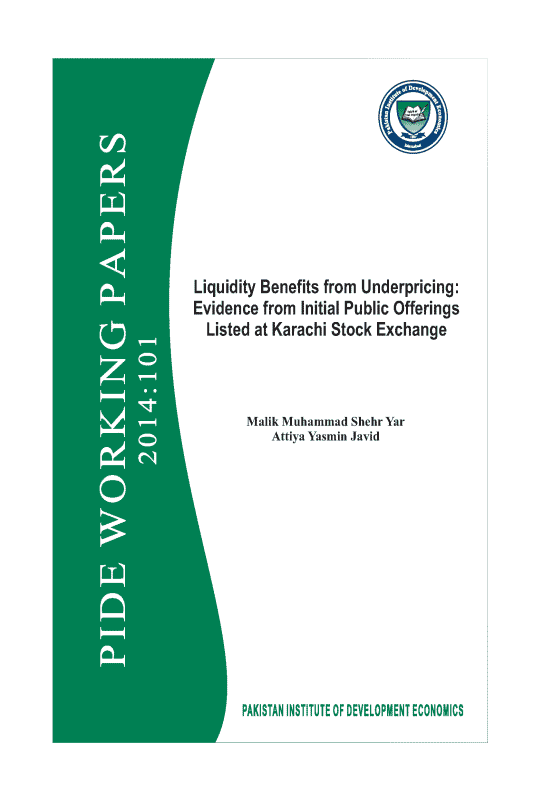
Pakistan Institute of Development Economics
- Home
Our Portals
MenuMenuMenuMenuMenuMenuMenu - ResearchMenuMenuMenuMenuMenuMenuMenu
- Discourse
- The PDR
- Our Researchers
- Academics
- Degree Verification
- Thesis Portal
- Our Portals
Liquidity Benefits from Underpricing: Evidence from Initial Public Offerings Listed at Karachi Stock Exchange
This study explains the underpricing phenomenon through the relationship of underpricing (initial returns), ownership structure and aftermarket liquidity empirically by using cross-sectional data of 59 IPOs issued at Karachi Stock Exchange from 2000 to 2012. Ownership dispersion theory suggests that underpricing creates oversubscription which helps issuer to create dispersed ownership structure (Broader shareholder base and equal distribution of shareholdings). Both of these factors increase after-market liquidity as higher demand (oversubscription) and dispersed ownership structure is characterised with higher after-market liquidity. As the main objectives of a firm going public is to create more dispersed ownership for the existing shareholders and to reduce risk of existing owners by creating liquid market. By using a sample of 59 IPOs this study found evidence of the above arguments. This study found statistically significant results of models incorporated different proxies of ownership and underpricing, ownership and liquidity and underpricing with liquidity after controlling some firm characteristics which affects firm decision to underprice the issue. From the evidence of the study it can be said that liquidity and dispersed ownership dispersion are benefits of underpricing. Issuers underprice the issue to obtain these benefits. These findings leads to the implications that issuer underprice their issue to obtain its two main objectives, first to attain dispersed ownership structure and achieve after-market liquidity.



